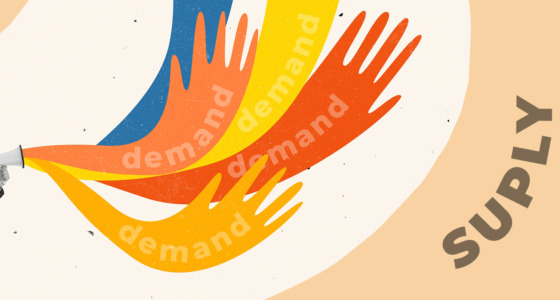

News trading is a common strategy that allows traders to consider fundamental factors and trade on their outcome. Although there are predetermined rules on how the market is supposed to react to a certain type of event, news trading is poorly predictable and risky. At the same time, traders can’t avoid this approach because news triggers strong price fluctuations. Keep reading about how to mitigate news risks and raise the chance of successful trades.
In March 2020, the Fed cut the interest rate to 0%. It was the second cut within a month caused by the negative effect of the 2020 crisis. The central bank also announced its plans to purchase $700 billion in government securities. Unexpectedly, the next day, the DJIA index plunged 3,000 points. It was its largest crash since 1987.
Fundamental, technical, and news approaches: differences
Before you trade on the news, you should learn the features of this approach.
Technical analysis vs. news
Technical traders base their strategies on historical price actions, as the price is cyclical, and its movements repeat. Technical analysis implies the use of indicators, candlesticks and chart patterns, and trends. Traders receive signals from them and open trades accordingly.
News traders can’t use historical price data, as news and reactions to them never repeat. Even monthly nonfarm payrolls are different every time they are released. Therefore, traders make a trade decision only when the event occurs.
Fundamental analysis vs. news
News trading is a part of fundamental analysis. However, the fundamental approach covers a broader set of information. It considers all economic, political, and social factors that influence a particular asset. Fundamental analysis is widely used for long-term trades.
News traders are interested in a single event. That’s why news trading allows opening only short-term trades, and a trader’s decision on the trade can rapidly change if the event’s outcome differs from what was expected.

Financial news: types
News can be divided into two categories – scheduled and spontaneous.
1. Scheduled event
Scheduled news covers events a trader is aware of in advance, including economic data releases, earnings reports, and elections. Scheduled events are tracked via an economic calendar, news, and social media.
It’s much easier to trade scheduled news. Moreover, this approach is less risky.
2. Spontaneous events
As you could conclude from the name, such events aren’t expected by traders and require them to make trading decisions quickly. Occasional event trading is risky, as traders don’t expect the news and can’t predict its outcome. The 2008 global financial crisis and the 2020 coronavirus pandemic are examples of spontaneous events.
It’s not recommended to trade on occasional events even if you are a professional.

Major news strategies
Although it was mentioned above that news trading occurs when the event happens, this should be taken with some corrections. In general, the concept is true. However, you can trade the scheduled event in two ways.
First, you can open a trade ahead of the event. Every economic release has a forecast based on analyst projections, and an election outcome is also predicted. If the prediction is positive for the asset you trade (you can evaluate this by comparing the data to the previous report or checking what candidate is more favorable by citizens), you should open a buy position.
Another approach is to open a trade as soon as an event occurs. Here, you should compare the actual outcome with the forecast. If it’s worse, the asset will depreciate. If the actual data is better, the asset is expected to appreciate. It’s important to measure the difference between the projection and the actual report. If it’s small, the price won’t react as the outcome will be priced in.
You should always separate these strategies. If you trade ahead of the event, close the position as soon as the news is out. If you trade after the event occurs, don’t open a trade before you evaluate its outcome.
It’s difficult to determine take-profit levels, as the market reaction is unpredictable. It’s recommended place targets based on previous maximums/minimums depending on the direction of the future trade. Remember about stop-loss points. You can place one slightly above/below the entry level.
Takeaway
News trading is a risky approach. You can’t base your decisions on historical data and look for patterns or indicators, as they won’t be able to react quickly to price changes. You should think in advance about how the price may behave. News trading requires your time and comprehensive analysis of events.
Disclaimer: No strategy can guarantee a 100% correct trade outcome.








